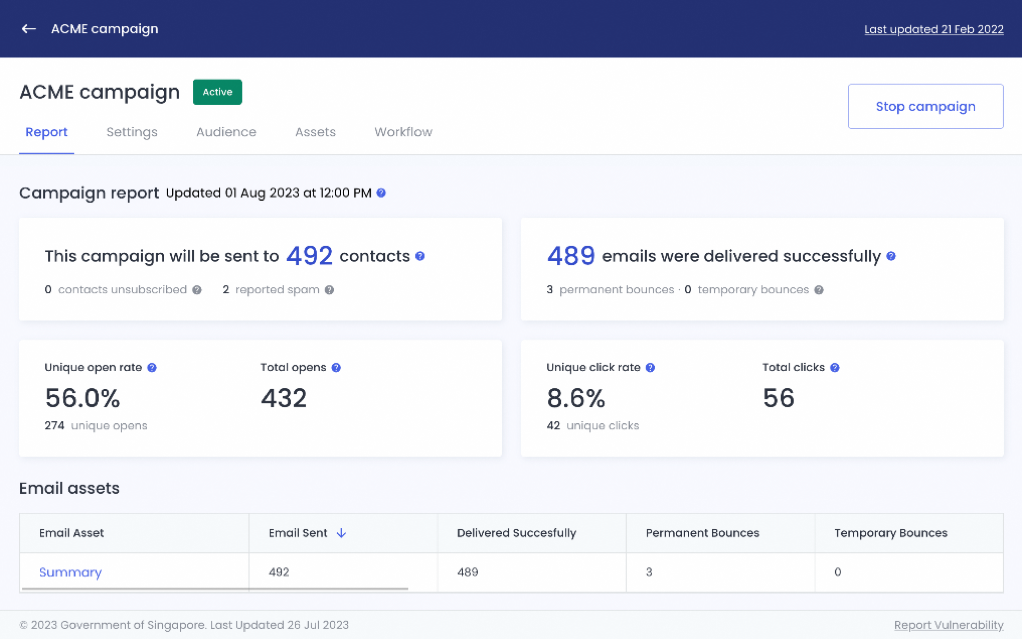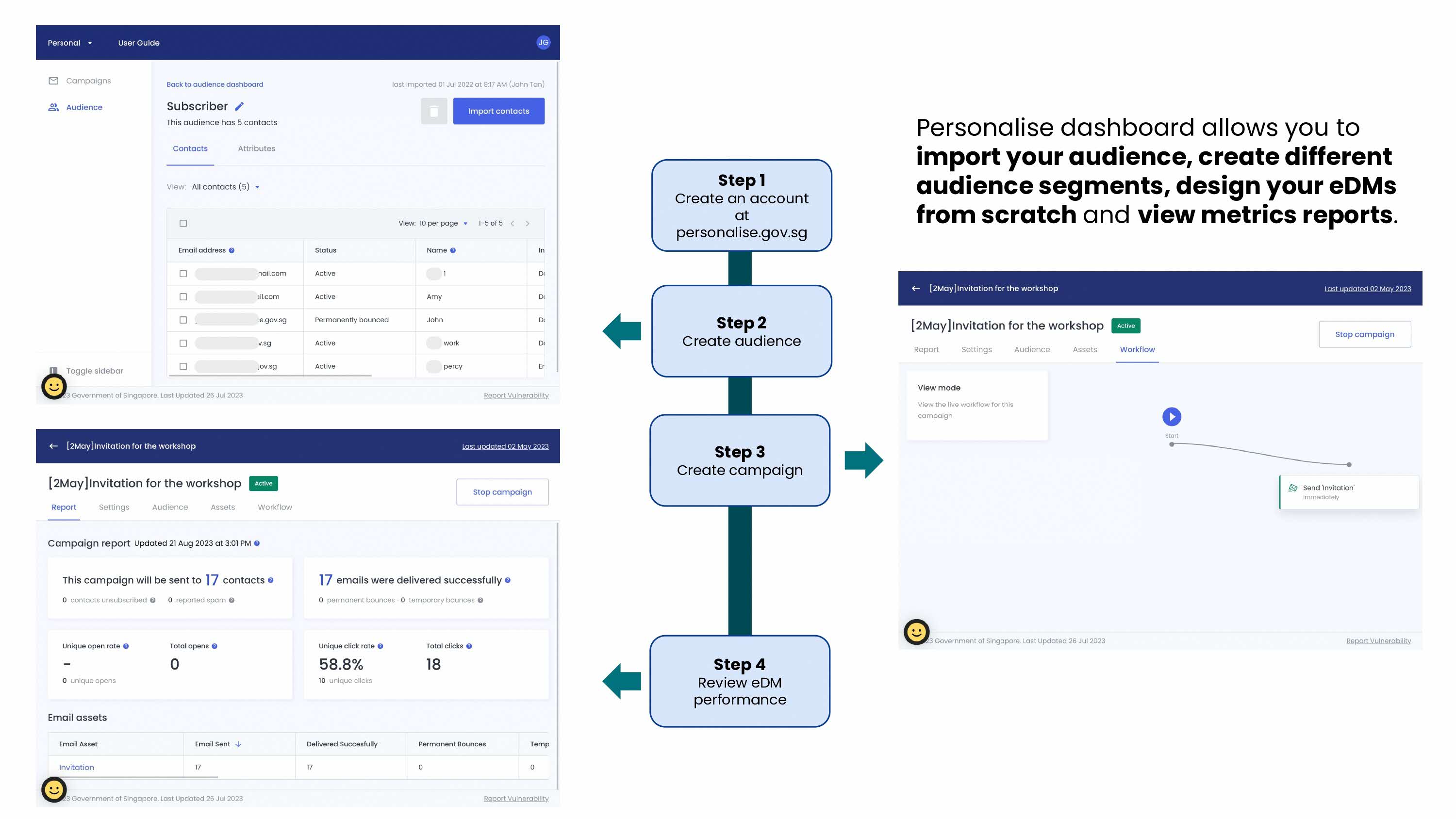
Government agencies communicate via .gov.sg websites (e.g. go.gov.sg/open). Trusted website

Look for a
lock (
Personalise – Curating Tailored Citizen Experiences
Personalise

Personalise, or Percy, is an email personalisation tool developed by GovTech’s Government Digital Services (GDS) to help public agencies offer personalised Government services to citizens. It is part of the Singapore Government Tech Stack (SGTS).
By using Personalise to customise agency emails sent to citizens, agencies can ensure that citizens will have an improved experience with Government services, leading to quicker and more satisfying decisions and outcomes. This in turn leads to increased usage of Government products and services.
Email personalisation leads to more effective targeting and engagement strategies which help strengthen Government-citizen relationships, thereby building trust in the Government.
Key Benefits
- Easy email campaign creation: Public officers can easily design email campaigns in minutes, and create an HTML EDM using the email builder feature without any coding skills required.

- Convenient email campaign tracking: Officers can easily track, manage and monitor the performance of their email campaigns via the campaign metrics page in Personalise.
Customer Stories
Email Personalisation by Ministry of Education
The Ministry of Education (MOE) SchoolBag team uses Personalise’s email personalisation tool to send out a monthly customised newsletter to their subscribers to increase their site engagements.
-
The SchoolBag team uploads a new set of subscribers onto the email personalisation tool’s “Audience” module every month. This module ensures that existing records are updated and duplicates are removed.
-
The SchoolBag team uploads a new set of subscribers onto the email personalisation tool’s “Audience” module every month. This module ensures that existing records are updated and duplicates are removed.
-
The SchoolBag team will then create a new newsletter through the “Campaign” module simply by uploading email assets and choosing the right subscriber list. The team can also create user segments and customer journeys through rules within the “Workflow” interface. This allows each group of users to receive customised follow-up emailers based on their actions and attributes.
-
When a campaign is launched, the performance of the campaign will be tracked, and unsubscribe requests or bounces will be managed accordingly.

Pricing
Personalise is free for public officers to use until further notice.
What’s Next?
The Personalise team aims to roll out the email personalisation tool to most government digital services over a one-year period.
Contact Us
Reach out to the product team with your queries or feedback through this form.
Last updated 23 August 2023
Thanks for letting us know that this page is useful for you!
If you've got a moment, please tell us what we did right so that we can do more of it.
Did this page help you? - No
Thanks for letting us know that this page still needs work to be done.
If you've got a moment, please tell us how we can make this page better.